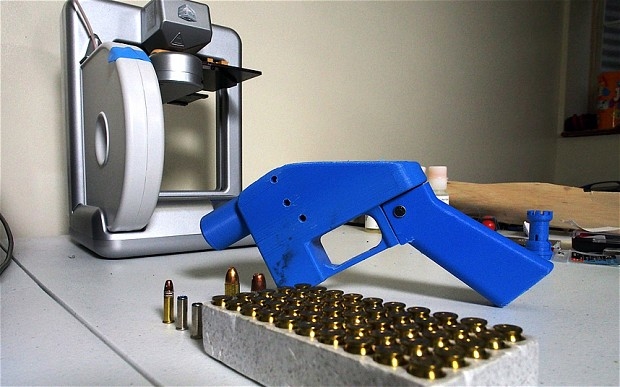Risks involving 3D-printing
In my previous column I talked about bringing 3D-printing available to everyone. This would enable the individual back into the mass market by allowing for the customisation of products. In my opinion this is something that is lacking in today’s industry. However with the rise of 3D-printing, a relatively new product for the “average Joe”, comes new risks.
With every innovation comes risks, a lot of risks can be mitigated by proper over watch by 3rd party organisations. These organisations can be independent companies but most primarily the government. When a product becomes more broader available, providing over watch on how the product is used becomes more difficult. Does this mean that a product has to take into account on how it will be used by society?
For 3D-printing this of course is a very relevant question, since with a 3D-printer someone can make almost everything. Even products that previously were thought to require metals in their production can now be made to a limited extent with 3D-printers. A great example of this is 3D-printed guns.
3D products are printed by loading a 3D computer model in the printer, this model is made by a computer programme. This means the model can be shared on the internet through regular independent mediums, such as Thingiverse.com. The result of which is that in principle anyone with a 3D-printer can make a home-made gun.
I do not think I have to express the dangers and risks a 3D-printer brings besides the positive usage. For now the people that make these things have used them to bring it to the attention of the government, which I find courageous. This also shows that the governments are running behind on these new innovations. A lot of times a government can afford it to run a bit behind innovations that are being done by the private industry. In the case of 3D-printing however it cannot.
3D-printing could be changing the way we live by completely changing the basis of the consumer market. 3D-printers can improve our lives but it also makes us our very own creators. Governments should lead the way in policy making regarding 3D-printing to prevent “mad-scientists” running rampart. Being our own creators can improve innovations on other levels as well but there can also be negative side effects of this, such as the self-printed weapons. This policy making should include coming up with a proper infrastructure to make sure the negative sides of 3D-printing are mitigated as much as possible.
I have talked about the risks of 3D-printing, the fact that we could become our own creators could lead to new innovations being made but could also lead to negative side effects. These negative side effects can be direct effects (people being able to create a self-printed weapon) and indirect effects (ethical questions; e.g. only rich people being able to pay for certain printed medications). Governments have to be forerunners in steering the development since it could prove to be a fast moving one.
Bas Krijnen
